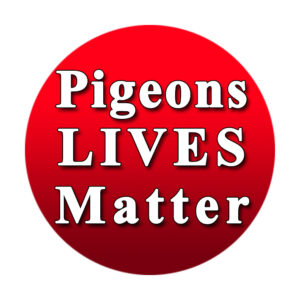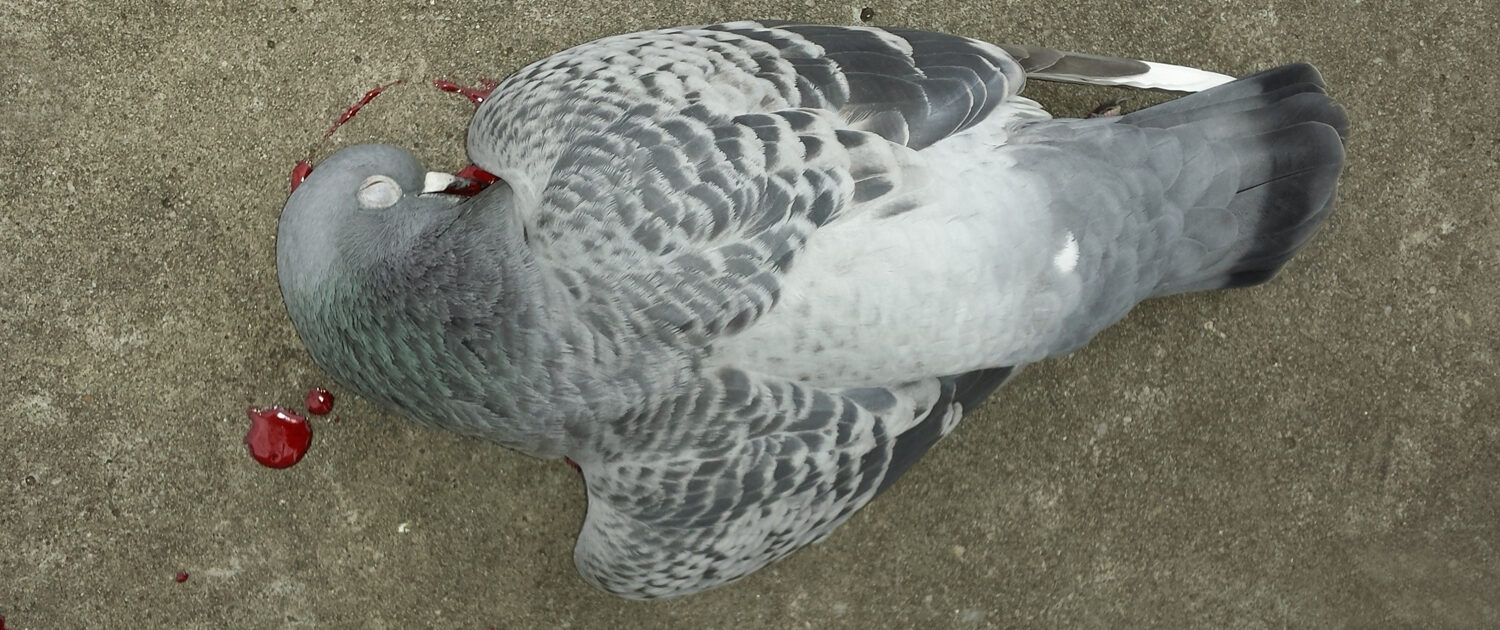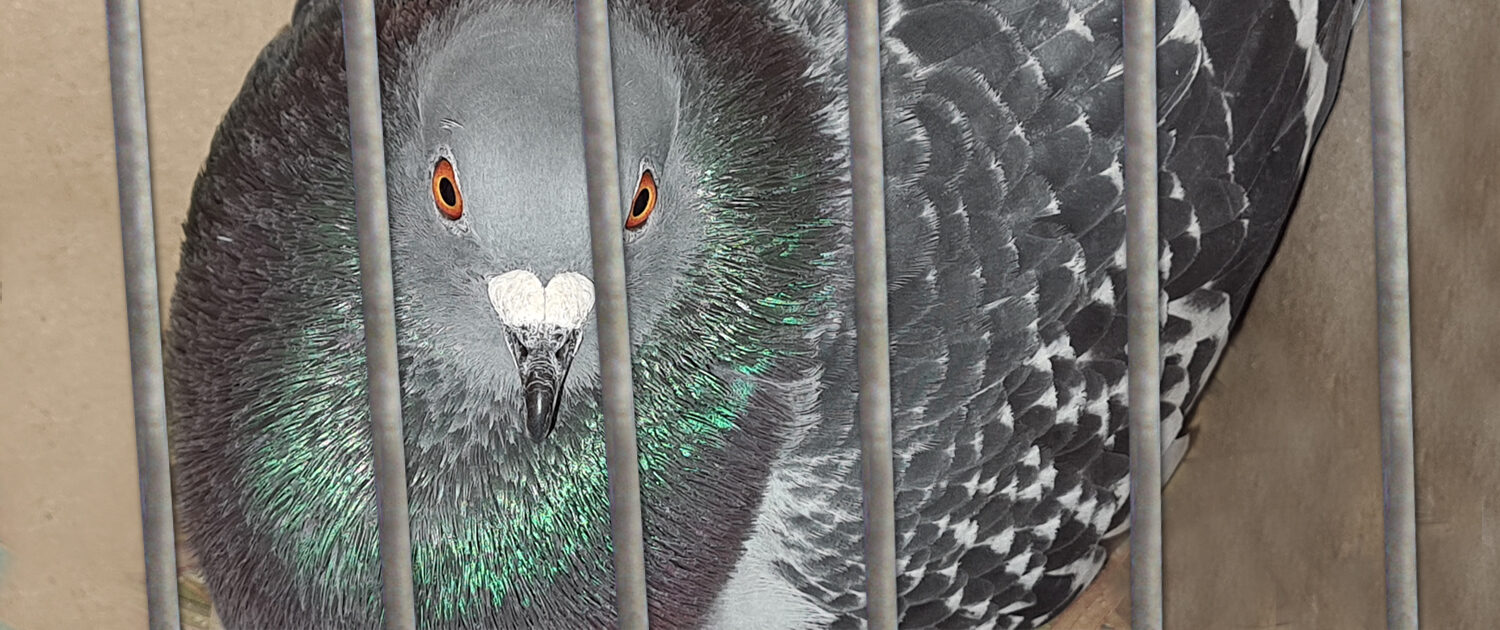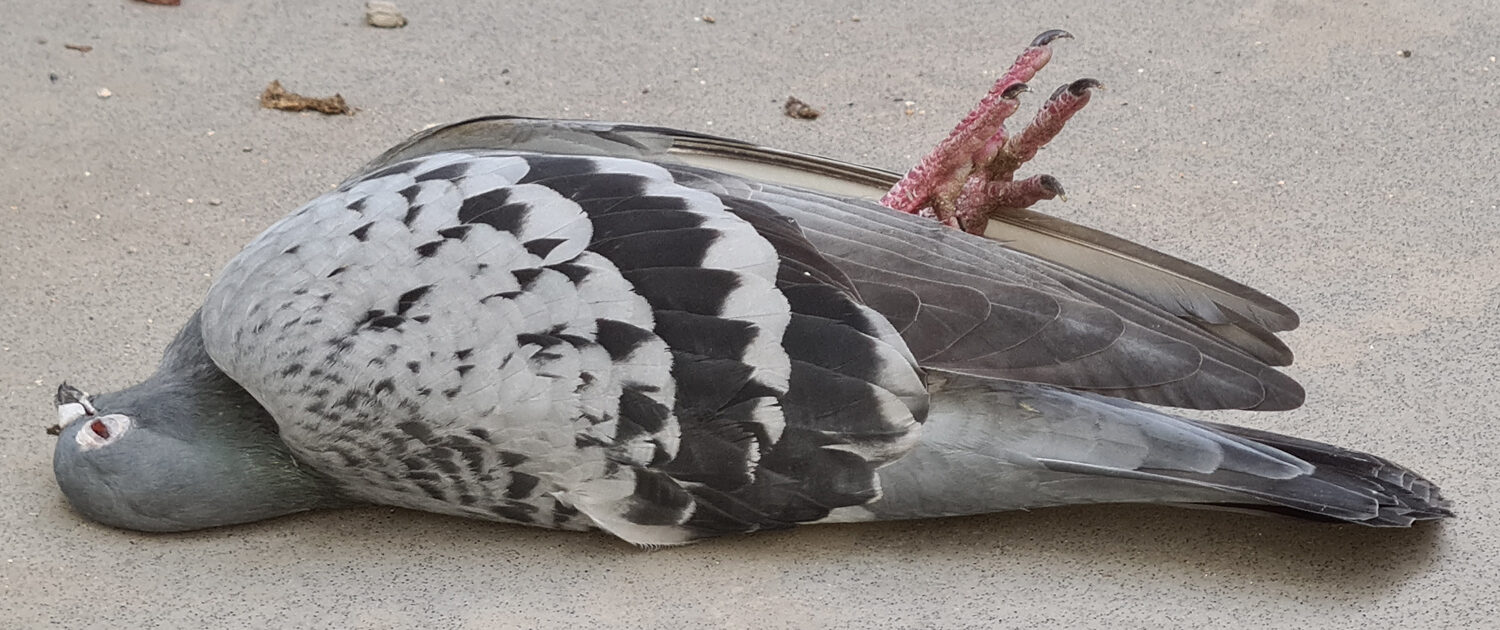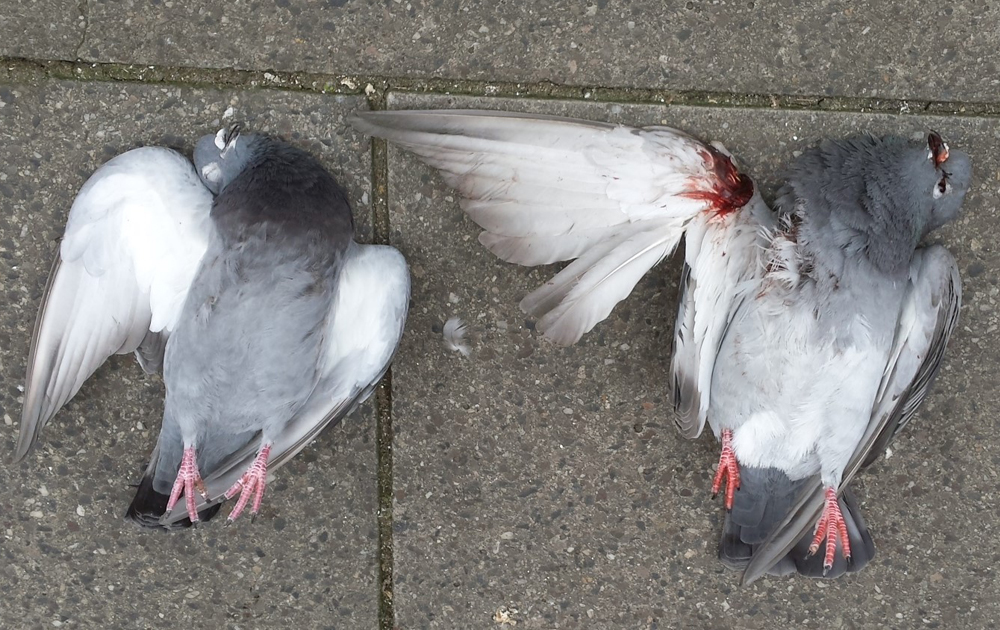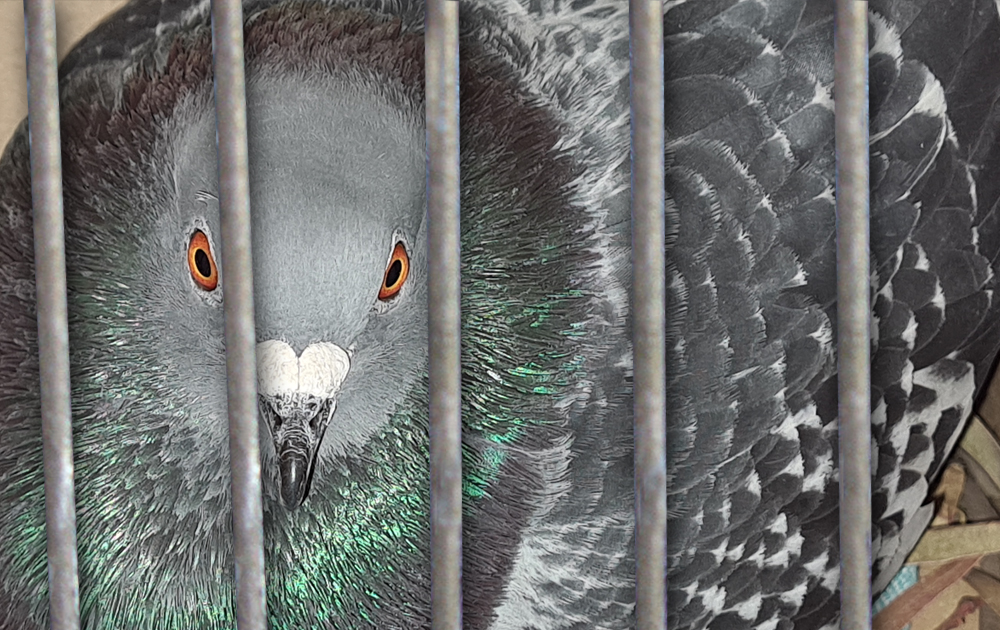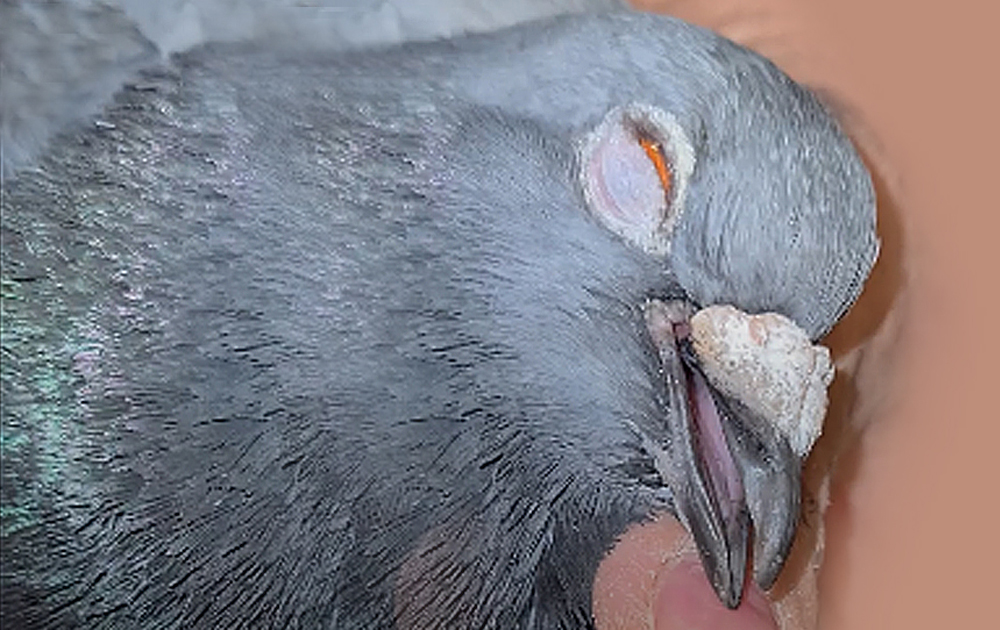This method involves encouraging pigeons into a trap that is placed in their roosting or feeding area and that is either baited with a live bird or, more commonly, with grain. Once a certain number of birds have been trapped they are removed and killed. The birds are commonly killed either by gassing or neck dislocation by pliers. The traps are then re-set. Alternatively, where more sensitive clients are concerned, pest control contractors may suggest that the trapped birds can be removed and released elsewhere. Although the client is led to believe that the trapped birds will be released to live another day, the reality is that they will be killed as soon as the pest controller leaves the site, or even when they are still on the site in some cases. Pest control contractors never release trapped birds, they are always destroyed. However, assuming that the trapped birds were released by the pest controller they would fly directly back to the site from which they had been removed, even if they had been taken several hundred miles away for release. This happened in the town of Bedford where the council brought in a pest control contractor to trap pigeons in the town centre. The trapped pigeons were then removed to an aviary where they were kept for six weeks, before being released some 250 miles away. Each bird had a blue ring fitted to its leg so that any birds that did return to Bedford were immediately identified. Of the 80 pigeons that were trapped, over 70 returned.
It should be noted that pigeons will always return to their roost and therefore, no matter how far the birds are taken from their existing roosting site to be released, they will fly directly back to the roost from which they have been removed…
Although there is a legal requirement for anyone setting traps to inspect their traps every 24 hours, some pest control contractors fail to comply with this legislation and trapped birds are left to starve to death or die of exposure. This was the case when Westminster City Council contracted a pest control contractor to provide traps on flat roof areas of council-owned accommodation provided for the elderly. Residents witnessed up to 30 birds being left in cage traps, with no food or water, for over 72 hours in searing temperatures. Although in this case it was the pest control contractor that had broken the law, had a prosecution taken place it is likely that Westminster City Council would have been prosecuted, not the pest control contractor.
It should also be pointed out that if a breeding pair of birds is lured into a cage-trap their young in the nest will starve to death. This means that the decaying carcasses of these young birds are left to decompose and become maggot-infested causing far greater problems to the property owner than the original pair of pigeons had caused by their fouling. Clearly these issues, and indeed the humanitarian arguments, are never discussed with the client by their chosen pest control contractor.
Of all the methods of lethal pigeon control cage-trapping is far and away the most inefficient. After traps have been in site for 2 weeks or more they will be avoided by the target species and therefore become redundant. Although all methods of lethal control are inefficient and ineffective, this method will always cost the client more than any other method.
